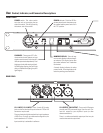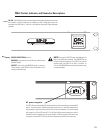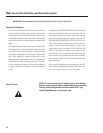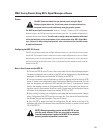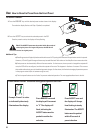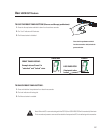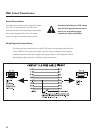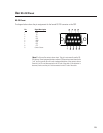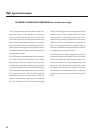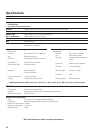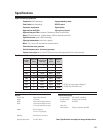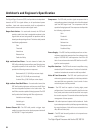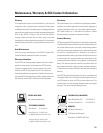
20
TRI-AMPED PA CABINETS WITH SUBWOOFER (refer to illustration at right)
Use: Application Example
This is highly generalized, but shows the main idea in cre-
ating larger systems. In this example, the audio source
material is connected to the inputs of all four DSP’s. Take
care to keep right and left channel signals connected to the
correct channels of downstream equipment. For example,
keep all left channel signals routed through the channel 1
sections of downstream gear and all right channel signals
routed through channel 2 sections of downstream gear. This
preserves stereo imaging.
Each DSP would be setup independently with the appropri-
ate crossover response and equalization for the specific
driver being used. Refer to the speaker’s (or driver’s) docu-
mentation for recommended frequency range, drive level,
and any other applicable information. In the example at right,
DSP #1 (assigned to high frequency drivers) might be set up
for a high pass filter with a -3dB point of 6 kHz and high-
speed limiters to protect them from transients. DSP #2 (as-
signed to midrange drivers) might be set for a band pass
filter, with -3 dB points at 1 kHz and 7 kHz using mild signal
limiting. DSP #3 (assigned to low frequency drivers) might
provide a 45 Hz to 1100 Hz bandpass with EQ to remove
modal resonances of the listening environment. DSP #4
(subwoofer drive) could be assigned a low pass filter with a
-3dB point of 50 Hz and equalization as required. All the
filters mentioned above would have assignable response
type (where applicable) and assignable slope characteris-
tics enabling precise tuning of the system.
Power requirements for high frequency drivers are gener-
ally much lower than for low frequency drivers; this requires
either reduced gain in the signal processing stage or the
lower power amplifier for the high frequency drivers. The
opposite is true for the subwoofers; they generally require
the highest power to drive them, so assign your most pow-
erful amplifiers to the lowest frequency drivers. Assign your
amplifiers to the drivers according to the required power
levels .



